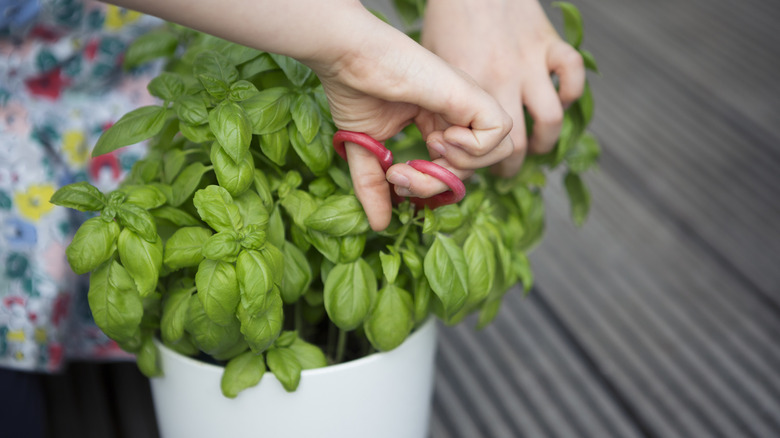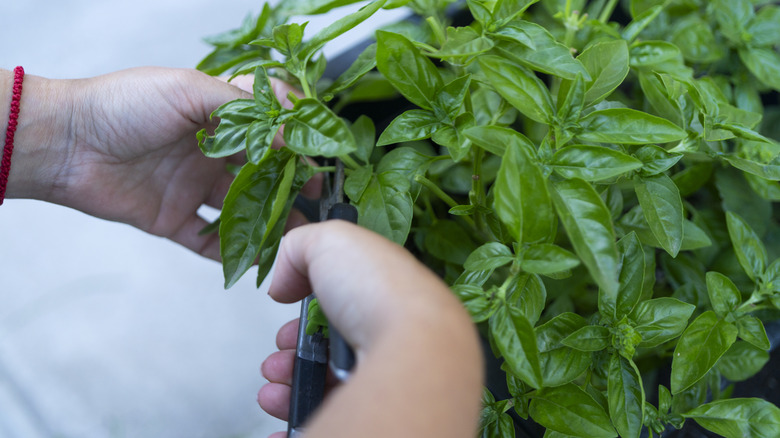The Right Way To Harvest Basil So It Keeps Growing Back Strong All Season
Basil (Ocimum basilicum) is one of the most rewarding herbs to grow, especially for beginners. Despite there being plenty of helpful tips out there for growing basil, many gardeners can unknowingly ruin their plants by harvesting them incorrectly. This could lead to stunted growth or premature flowering, a process known as bolting. Basil is an annual that grows from a central stem with pairs of leaves emerging at intervals, and each leaf node is a potential growth point. When you harvest your plant properly, you will stimulate the plant to become more productive. You must learn how to work with the plant's natural growth patterns rather than against it.
The biggest mistake you can make is plucking individual leaves from the top of the plant. While this may seem efficient, it encourages the basil to grow tall rather than full. More importantly, basil plants have a natural tendency to flower as summer progresses, after which the leaf production declines, and the flavors become bitter. Strategic harvesting helps delay this process by redirecting the plant's energy toward leaf production rather than reproduction. Timing is important as well. Basil is ready to be harvested when it gets around 6 to 8 inches tall.
How to pick basil leaves for nonstop regrowth
To harvest basil properly, look for the right spot to make your cut. Find stems that have developed at least three to four sets of leaves, then use clean scissors to snip just above the second set of leaves from the base. It is better to cut rather than pull the leaves off your basil plant when harvesting. This method leaves enough foliage for photosynthesis and encourages new stems to emerge from the leaf nodes below your cut. Never remove more than one-third of the plant at once as this will stress it. For smaller, frequent harvests, take the top sets of leaves from multiple stems rather than going at a single branch.
Regular harvesting helps your basil plant. Trim the stems every couple of weeks, even if you do not need the leaves immediately. This helps prevent early flowering and maintains growth from the plant. When you notice flower buds forming, immediately pinch them off along with the top two sets of leaves below them. If you want a larger harvest, cut the stems back more aggressively but leave at least two sets of leaves on the lower portion of each stem. After harvesting, consider giving the plants a little boost with a diluted liquid fertilizer, which will help support new growth. With the right techniques, you will be able to continuously grow fresh basil so you have a never ending supply throughout the entire growing season.

